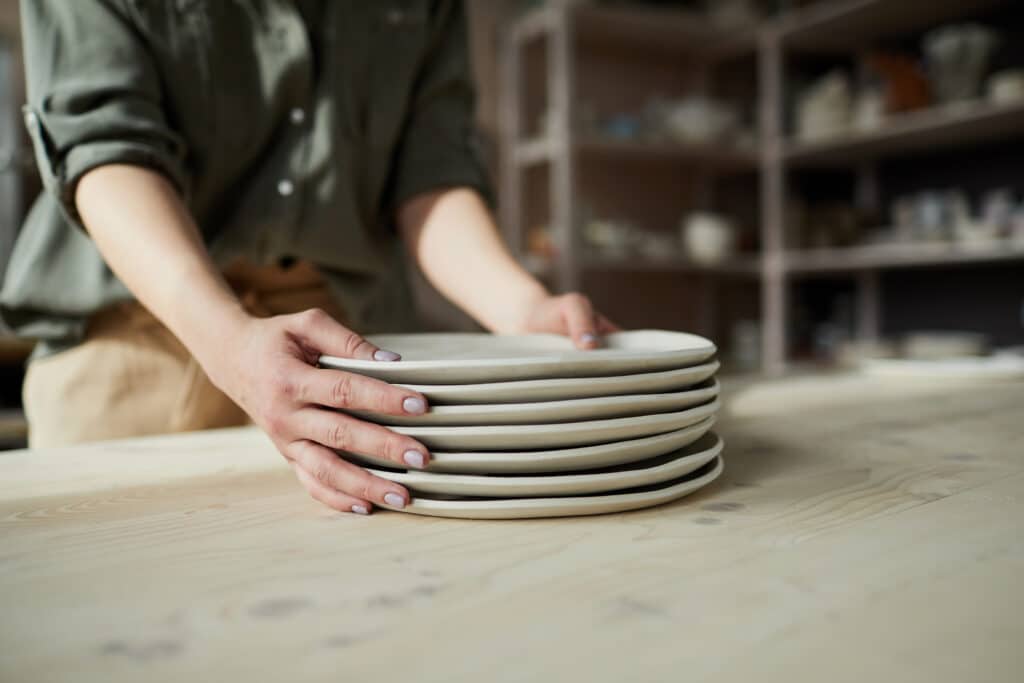What’s the best way to pack plates for moving?
To begin our in-depth series about packing household items for moving so they arrive at your new home in the same condition they left, we’re looking at packing plates. Plates can be notoriously awkward to pack, as they’re usually round, they’re breakable, and unless you have a collection of mismatched plates, you’ll want to preserve the set. Let’s dive in and look at the best way to pack plates for moving.
Packing materials
- Medium boxes. Invest in moving boxes for breakables. Moving boxes are stronger than standard boxes and offer much greater protection for plates.
- Packing paper and bubble wrap. Don’t use old newspapers, as they leave ink marks on plates.
- Packing tape. Use packing tape for moving, as it’s much stronger than normal tape.
- A permanent marker pen to label your boxes.
Prepare your boxes
- Assemble your box and place it top side down.
- Seal the bottom centre seam with packing tape. Start from the side and cross over to the other side so the tape is one continuous piece about a third of the way up each side of the box.
- Test the centre seam. If it doesn’t feel solid, add another strip of tape. Repeat if necessary.
- Tape the side seams.
- Turn the box over and create a soft bed for your plates with bubble wrap or balls of scrunched-up packing paper. You can also use soft linen or towels.
Wrapping plates
- Always wrap plates individually for the best protection while in transit.
- Lay your packing paper out on a table or bench.
- For large plates, place the plate in the centre and fold the flaps over to cover the plate. Wrap and stack the plates in groups of the same size. Secure the stack with packing tape.
- For smaller plates, place the plate on the packing paper and fold one corner over so it’s completely covered. Stack a second plate onto the first and fold another corner over. Repeat until the sheet is used. Then secure the stack with packing tape.
Packing plates into the box
Pack your stacks of plates sideways into the box so they are standing up on their edges. While this may seem counterintuitive, plates can take more pressure when stacked this way compared to plates that get packed flat and are less likely to break.
Fit your stacks together for the best fit so they’re packed snugly with minimal space. Fill empty spaces with balls of packing paper and add a layer of cushioning on the top the same way you protected the bottom.
Finally, close the top and seal the seams the same way you sealed the bottom of the box, with layers of tape through the middle and tape along the open seams on the sides of the box.
Mark the box
Use your permanent marker and clearly label the box with the following:
- FRAGILE
- Plates
- Kitchen
If you follow these steps, you’ll give your plates the best protection while in transit. If you don’t have the time to pack, call in the professionals to make sure your breakables get packed properly.
